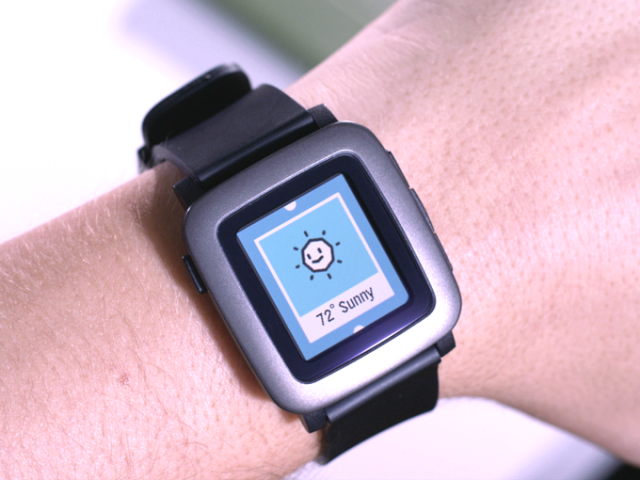Pebble Time can make it without Kickstarter, but why bother?

Pebble launched its first smartwatch through Kickstarter, raising more than $10 million from nearly 70,000 backers. It's one of the most successful campaigns to ever be hosted on the crowdsourcing site. Some might say that it's time for Pebble to move on to the next level.
However, earlier this week Pebble used Kickstarter once again to launch its latest smartwatch, called Pebble Time. The company's second crowdsourcing campaign is a huge hit, days after its start, surpassing its initial goal of just $500,000 by nearly $8 million at the time of writing this article, with 30 more days to go before the grand finale.
Nearly 40,000 backers have contributed to the Pebble Time campaign, handing over $8.3 million to get their hands on the smartwatch. With so many folks wanting to get Pebble Time, it was only a matter of time before the $159 pledge -- which gets the first 10,000 backers Pebble Time at the lowest price, in any of the available three color trims -- would be off the table.
Heck, now there are just over 5,200 spots left -- out of 30,000 -- in the $179 pledge before that goal is met. There are backers -- nearly 3,800 -- who opted for the costlier $338 pledge to get two Pebble Time smartwatches at a lower-than-retail cost. (There's also a $5,000 pledge available, which gets backers 10 Pebble Time smartwatches in each color, but just over 70 have used it so far.)
When it goes on sale, the device will be available for $199, so there are some significant savings to be made here. The smartwatch packs a color display, a first for a Pebble, has a microphone for voice control, week-long battery life, and is compatible with -- Pebble says -- 7,500 existing apps. The price, combined with the strong feature set that is characteristic of Pebble smartwatches, make Pebble Time one of the easiest sales in the smartwatch market right now.
This begs the question: "Why is Pebble even bothering with Kickstarter to bring Pebble Time to market?" It is not like the smartwatch needs all the help it can get to make it. Its predecessors have done just fine alongside a competition which has offered color displays, more features, sometimes better integration with certain devices. Also, the upcoming and unproven Apple Watch, which might not even get a day of battery life if current reports are to be trusted, is in a totally different price league, costing at least 75 percent more.
One likely reason why Pebble is leveraging Kickstarter with Pebble Time is for the publicity that comes from having a hugely successful crowdsourcing campaign, which in its case is virtually a given, and, at the same time, to make it easy for prospective buyers to pre-order -- and pay for -- the smartwatch. Whatever the reason, Pebble's strategy is working great. By the end of the campaign, I wouldn't be surprised to see the company raising well over $20 million. So why bother changing the recipe?